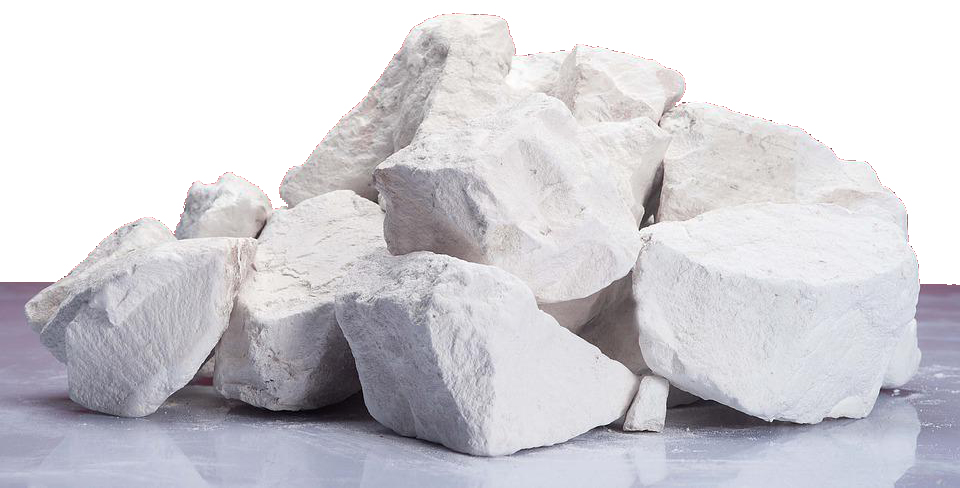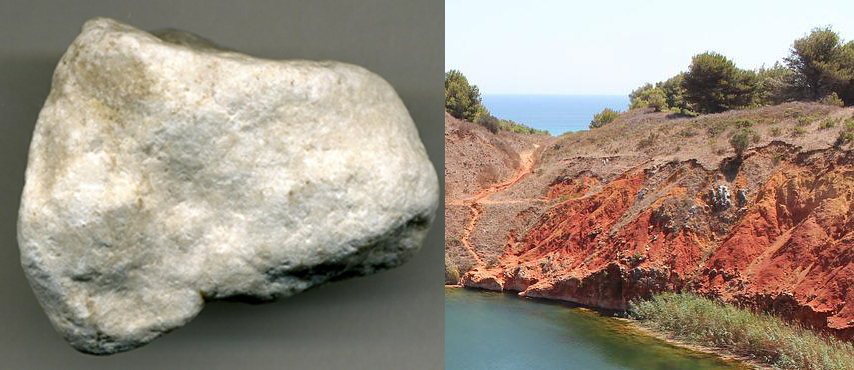Calcination
Contents |
[edit] What is calcination?
Calcination (calcined) is the decomposition or purification of a material (primarily mixed carbonate ores) through exposure to extreme heat in a limited air or oxygenated environment. The process is a branch of extractive metallurgy, known as pyrometallurgy. Although carried out in a extreme heat environment the reaction that occurs is endothermic, because the treated material absorbs heat due to remaining cooler than its surroundings. It is generally a synthesised process but can sometimes occur naturally for example under layers of hot volcanic ash from an active volcano.
[edit] Origins of calcination
The word originates from the Latin for calculate, which actually means to burn lime. It is still most commonly associated with the processing of carbonate based ores such as limestone (calcium carbonate) to carbon dioxide and lime (calcium oxide). In alchemy, one of two kinds of calcination, actual (from fire) and potential (from chemical reactions) were considered part of the 12 vital processes required for the transformation of a substance. However the term is today used to describe a wide range of high temperature treatments that dehydrate, decompose or chemically transform solid materials by removing toxic unwanted, unstable or volatile substances, through oxidation or dehydration.
Another heat treatment process is 'roasting', although similar, this is different in that it is carried out in an excess of air or oxygen and is used to release unwanted gases or other substances from sulphide ores in the manufacture of metals such as copper lead and zinc.
[edit] Other calcines
The calcination of bauxite and gypsum removes crystallised water to produce a very hard, high friction mineral used in roads, pedestrian walkways and internal and external industrial flooring. In the case of gypsum it produces plaster and stucco materials used for internal finishes. It is also used to manufacture glass products through the calcination of anatase, a mineral form of titanium dioxide (TiO2), to rutile, an oxide mineral of the same, which is colourless and used to coat glass in antifog or self-cleaning films.
The process is also used to purify raw petroleum coke, aluminosilicate minerals for catalysts and absorbents, as well as hydrofluoric acid to create uranium dioxide used in the nuclear industry and hydrofluoric gases used to process pharmaceuticals and refrigerants.
[edit] Limestone calcination
The most well-known use of calcination is that of limestone, clay and other substances in the production of clinker which is a main component of cement of concrete. In this process limestone and clay, as well as iron ore, steel slag or ashes are heated to around 1,450C, where calcination splits the material into calcium oxide and CO2. The new substance of small grey balls is known as clinker which is cooled and crushed to a powder and mixed with around 2-3% gypsum (also produced through calcination) to create what is known as ordinary Portland Cement.
[edit] Carbon dioxide and calcination
Around 40% of limestone by weight is CO2. This is released during the calcination process and accounts for about 60% of the emissions from cement production, a further 30% can be accounted for by the fuel used to achieve the high temperatures. To keep in line with a net-zero emissions scenario by 2050 an annual decrease in cement related emissions of around 3% is required as a minimum. Currently these have been increasing by 1.8% per year from 2015.
To keep in line with requirements of the Paris Agreement on climate change by 2030 annual emissions from cement would need to decrease by at least 16%, of which one might assume approximately 10% needs to come directly from the calcination.
The primary approaches to reducing calcination related emissions are:
- Reducing in the demand for clinker, through design and specification, as well as broadening the range of cement blends.
- Employing carbon capture technologies at the point of emission from cement plants, along with innovative use and storage of captured carbon (CCUS).
- Adaptation of processes to use alternative fuels sources. (calcination related emissions).
[edit] Related external links and references
- B. Rand, in Concise Encyclopedia of Advanced Ceramic Materials, 1991
- https://alchemymineral.com/calcined-bauxite/
- https://www.sciencedirect.com/topics/materials-science/calcination
- https://www.sciencedirect.com/science/article/pii/S2542435121001975?dgcid=author
[edit] Related articles on Designing Buildings
Featured articles and news
RTPI leader to become new CIOB Chief Executive Officer
Dr Victoria Hills MRTPI, FICE to take over after Caroline Gumble’s departure.
Social and affordable housing, a long term plan for delivery
The “Delivering a Decade of Renewal for Social and Affordable Housing” strategy sets out future path.
A change to adoptive architecture
Effects of global weather warming on architectural detailing, material choice and human interaction.
The proposed publicly owned and backed subsidiary of Homes England, to facilitate new homes.
How big is the problem and what can we do to mitigate the effects?
Overheating guidance and tools for building designers
A number of cool guides to help with the heat.
The UK's Modern Industrial Strategy: A 10 year plan
Previous consultation criticism, current key elements and general support with some persisting reservations.
Building Safety Regulator reforms
New roles, new staff and a new fast track service pave the way for a single construction regulator.
Architectural Technologist CPDs and Communications
CIAT CPD… and how you can do it!
Cooling centres and cool spaces
Managing extreme heat in cities by directing the public to places for heat stress relief and water sources.
Winter gardens: A brief history and warm variations
Extending the season with glass in different forms and terms.
Restoring Great Yarmouth's Winter Gardens
Transforming one of the least sustainable constructions imaginable.
Construction Skills Mission Board launch sector drive
Newly formed government and industry collaboration set strategy for recruiting an additional 100,000 construction workers a year.
New Architects Code comes into effect in September 2025
ARB Architects Code of Conduct and Practice available with ongoing consultation regarding guidance.
Welsh Skills Body (Medr) launches ambitious plan
The new skills body brings together funding and regulation of tertiary education and research for the devolved nation.
Paul Gandy FCIOB announced as next CIOB President
Former Tilbury Douglas CEO takes helm.
UK Infrastructure: A 10 Year Strategy. In brief with reactions
With the National Infrastructure and Service Transformation Authority (NISTA).
























